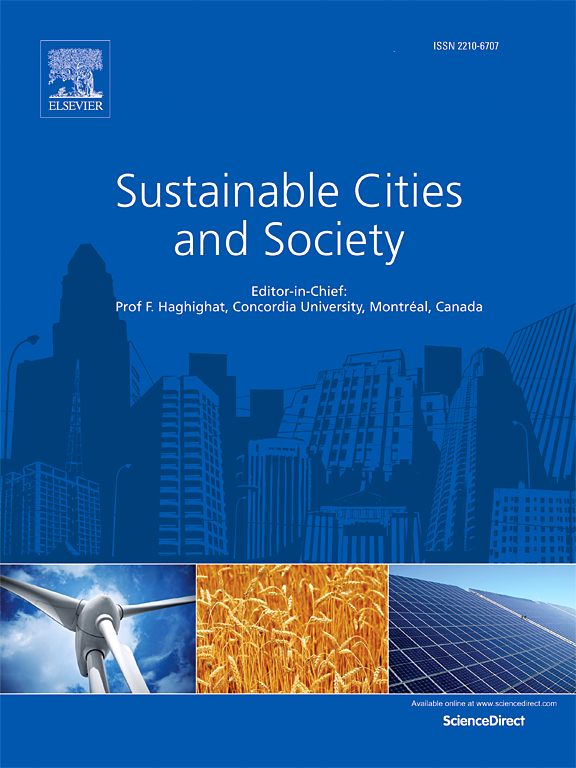Network structure and urban mobility sustainability: A topological analysis of cities from the urban mobility readiness index
IF 10.5
1区 工程技术
Q1 CONSTRUCTION & BUILDING TECHNOLOGY
引用次数: 0
Abstract
In the context of rapid urbanization, efficient and sustainable urban mobility is critical. This study explores the impact of urban network structure and socio-demographic factors on Urban Mobility Readiness (UMRi) across 62 cities worldwide. Using complex network analysis, Principal Component Analysis, and multiple linear regression models, we identify significant relationships between network metrics — such as average node degree, clustering coefficient, and graph diameter — and urban mobility performance. Cities with denser, more interconnected networks tend to achieve higher UMRi scores, indicating better preparedness for modern mobility challenges.
Our findings also highlight the importance of economic resources, with GDP per capita emerging as a significant predictor of UMRi. Cities with well-funded and well-designed transportation networks demonstrate stronger performance in terms of mobility readiness and sustainability. Conversely, cities with more dispersed networks face greater challenges in optimizing their transportation systems. These insights underscore the importance of compact, resilient networks that promote accessibility and efficiency.
This study emphasizes the critical role of network structure in shaping urban mobility outcomes and offers strategic guidance for enhancing transportation systems in rapidly growing urban areas. Future research should focus on integrating emerging technologies, such as autonomous vehicles and smart city solutions, to further optimize urban mobility. This approach offers a novel perspective on how the structure of urban networks influences the sustainability and efficiency of public transport in diverse urban contexts.
求助全文
约1分钟内获得全文
求助全文
来源期刊

Sustainable Cities and Society
Social Sciences-Geography, Planning and Development
CiteScore
22.00
自引率
13.70%
发文量
810
审稿时长
27 days
期刊介绍:
Sustainable Cities and Society (SCS) is an international journal that focuses on fundamental and applied research to promote environmentally sustainable and socially resilient cities. The journal welcomes cross-cutting, multi-disciplinary research in various areas, including:
1. Smart cities and resilient environments;
2. Alternative/clean energy sources, energy distribution, distributed energy generation, and energy demand reduction/management;
3. Monitoring and improving air quality in built environment and cities (e.g., healthy built environment and air quality management);
4. Energy efficient, low/zero carbon, and green buildings/communities;
5. Climate change mitigation and adaptation in urban environments;
6. Green infrastructure and BMPs;
7. Environmental Footprint accounting and management;
8. Urban agriculture and forestry;
9. ICT, smart grid and intelligent infrastructure;
10. Urban design/planning, regulations, legislation, certification, economics, and policy;
11. Social aspects, impacts and resiliency of cities;
12. Behavior monitoring, analysis and change within urban communities;
13. Health monitoring and improvement;
14. Nexus issues related to sustainable cities and societies;
15. Smart city governance;
16. Decision Support Systems for trade-off and uncertainty analysis for improved management of cities and society;
17. Big data, machine learning, and artificial intelligence applications and case studies;
18. Critical infrastructure protection, including security, privacy, forensics, and reliability issues of cyber-physical systems.
19. Water footprint reduction and urban water distribution, harvesting, treatment, reuse and management;
20. Waste reduction and recycling;
21. Wastewater collection, treatment and recycling;
22. Smart, clean and healthy transportation systems and infrastructure;
 求助内容:
求助内容: 应助结果提醒方式:
应助结果提醒方式:


